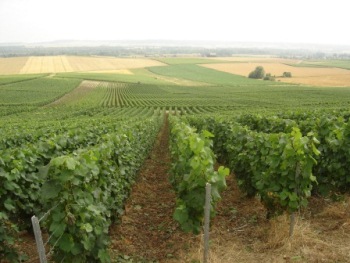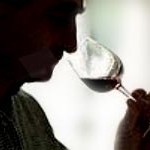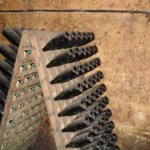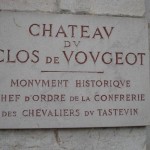Understanding French Wines: An Introduction

Generally regarded as the largest producer of wine in the world, and certainly the largest producer of fine wine, France and wine are inextricably linked. The French concept of terroir, that the complex combination of soil, climate, location and local tradition define the style of wine, resulted in the appellation system, where wines are named for the region in which they are produced rather than the varietal. France is the native home to many grapes that are now grown the world over, including Chardonnay, Sauvignon Blanc, Cabernet Sauvignon and Syrah (Shiraz).
To assist you in better Understanding French Wines, the following information has been sourced from Fourth Wave Wine Partners – importers of fine wines from Europe.
Quality Levels
French law divides wine into four quality levels, although due to the implementation in August 2009 of new EU wine marketing laws, some changes are afoot. These changes set minimum standards for labelling (among other things) that will apply across the EU. The most notable of these is that all wines will be able to include varietal and vintage on the label, which for most wines has not been the case to date.
The levels, in ascending order are:
– Vin de Table (approx 14% of total production)
– Vin de Pays (around 35%)
– Vin Delimite de Qualite Superieure (VDQS) (approx 1%)
– Appellation d’origine controlee (AOC) (around 50%)
Vin de Table, becoming Vin de France
Vin de Table (obviously ‘table wine’) is a basic commercial classification. Until August 2009, these wines carried only a producer’s name and a statement that they are from France. From August 2009, these wines will become ‘Vin de France’ and will be able to include variety and vintage on the label. These wines make up around 14% of France’s total production.
Vin de Pays, becoming Indication Geographique Protegee (IGP)
Vin de Pays (meaning ‘country wine’) carry a geographic designation of origin, such as Vin de Pays d’Oc, but use grape varieties or methods other than those required by the AOC regulations. Wines currently labelled Vin de Pays d’Oc will become IGP Pays d’Oc. IGP translates as ‘Protected Geographical Indication’.
Vin de Pays wines traditionally could be labelled with the varietal, which until recently most AOC wine could not. This resulted in an increase in popularity of these wines especially for export. The more relaxed regulations also mean that winemakers can produce non-traditional, innovative blends outside of the AOC rules.
There are currently about 140 Vin de Pays regions, five large regional ones and many smaller departmental and local ones. The new IGP areas will be larger than the Vin de Pays areas, meaning many of the traditional smaller Vin de Pays areas will disappear.
Vin Delimite de Qualite Superieure
VQDS (meaning delimited wine of superior quality) wines are being phased out from the 2011 vintage, but it was traditionally used for smaller regions or for regions waiting to be classified as AOC.
Appellation d’origine Controlee, becoming Appellation d’Origine Protegee
AOC (meaning controlled term of origin) is the French certification granted to agricultural products including wine, cheese and butter, by the Institut National de l’Origine et de la Qualite (INAO). AOP (meaning protected designation of origin) is the EU equivalent designation.
The text ‘AOC’ on a French wine bottle indicates that the wine inside complies with the regulations set out by the INAO for that particular appellation, intended to preserve the traditional characteristics of the wine. The regulations include where the wine can be sourced from, what varietals can be used and the winemaking practices allowed in that appellation.
There are currently over 300 wine appellations currently recognised by the INAO, which can cover entire regions, individual villages or even specific vineyards. For example, the entire region of Burgundy has the AOC Bourgogne, but within that are a number of sub-region AOCs, such as Cote de Beaune and Cote de Nuit, and within those even smaller appellations, some restricted to just a few vineyards.
Varietals
Many of the grapes now known as international varietals are indigenous to France, or became well known because of their use in France. Indigenous varietals include Chardonnay, Sauvignon Blanc, Merlot, Cabernet Sauvignon (now known to be a cross between Cabernet Franc and Sauvignon Blanc) and Syrah, known in Australia as Shiraz.
Wine Labels
French wine labels are notoriously difficult to decipher, partly because different appellations have different requirements and different classification systems. A Grand Cru Champagne for example, does not mean the same thing as a Grand Cru Burgundy.
Quality Level & Region
The first thing to look for is the quality level, as outlined above. One of these will always be on the label, along with the region it is from (other than for Vin de Table, which cannot specify the region). However as there are so many appellations and regions it will be difficult to know them all. The best bet is to find a few you like based around your preferred varietals and styles, then keep an eye out for them. Here is a quick guide at a regional level.
| Region | Varietal |
| Alsace | Riesling |
| Bordeaux | Cabernet Sauvignon blends, Merlot blends, Sweet whites (Sauternes) |
| Burgundy | Pinot Noir Chardonnay Gamay (Beaujolais only) |
| Champagne | Sparkling – mostly Pinot Noir Chardonnay |
| Languedoc-Roussillon | A bit of everything. |
| LoireValley | Sauvignon Blanc |
| RhoneValley | Northern Rhone– Syrah, often blended with Viogner Southern Rhone– Blends, mainly Grenache based |
Vintage
Usually rather obvious to spot, the exception being non-vintage Champagne. Will be included on Vin de Table / Vin de France wines in the future.
Producer
Both the producer and the bottler (if not the same) must be shown on the label. The more common types of producers include:
– Domaine – an estate that grows and makes wine, usually used inBurgundy.
– Chateaux – literally meaning castle; an estate that grows and makes wine, although the site may or may not actually have a castle. Most commonly used in Bordeaux.
– Negociants – negociants buy grapes or wine from growers then make or blend and bottle the wine under their own label.
– Co-Operative – a wine making venture owned by a number of different grower members.
The other tip is to get to know a few good makers from your favourite regions, then try their wines from different appellations.
Other Information
The label will also usually indicate where the grapes were grown and where the wine was bottled. Look for terms such as:
– ‘Domaine X’ or ‘Chateaux X’ – the estate where the grapes were grown, if the wine is made from estate grown fruit. If you don’t see one of these terms, it probably indicates the wine is made from a blend within the specified region.
– ‘Mis en bouteille’, meaning bottled, preceding who bottled the wine and where it was bottled. For example, ‘Mis en bouteille au Chateaux’ or ‘Domaine’ means the wine was bottled at the estate where it was grown and is considered an indication of quality. ‘Mis en bouteille a la propriete’ is used on co-op wines where the wine was bottled at a property that is a member of that co-op. ‘Mis en bouteille par X’ usually means the wine was bottled by someone else for the maker.
Other terms you may see…
– Vieilles Vignes, means ‘old vines’. However there is little regulation over the use of this term and what means old.
– Grand Vin, meaning ‘first wine’. Used in Bordeaux for the main wine produced by a Chateaux, not necessarily the best wine.
– ‘X & Fils’ or ‘X & Filles’. Often part of the producer name (particularly the former), meaning ‘& sons’ and ‘& daughters’ respectively.
See the pages on Bordeaux and Burgundy for further label complexities in those regions.
Regions
With nearly one million hectares under vine, the wine regions in France are numerous and stretch from Champagne and Alsace in the north, to the Spanish border in the south.
More detailed information about these seven key regions – Alsace, Bordeaux, Bourgogne (Burgundy), Champagne, Languedoc-Roussillon, Val de Loire and Vallee du Rhone – can be found on following web pages.







